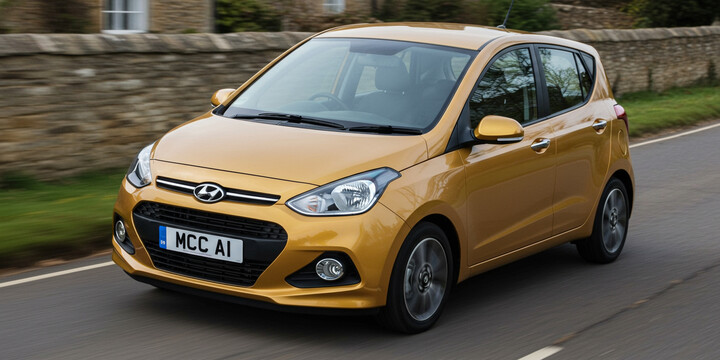
HYUNDAI I10 (2016-20)
The HYUNDAI I10 (2016-20) is a popular and reliable small hatchback, making it an ideal choice for city drivers, first-time car buyers, and those looking for a fuel-efficient, easy-to-manoeuvre vehicle. Known for its compact size, the I10 offers practicality for urban environments, with a comfortable interior and modern design that appeals to a wide range of drivers. With a typical used value around £7,036 and an average mileage of approximately 26,650 miles, this model is often well maintained by owners, usually having just over one previous keeper, which indicates its popularity and dependability in the UK market.
What makes the HYUNDAI I10 (2016-20) stand out are its affordable running costs, user-friendly features, and reputation for reliability. It competes strongly within its class by offering a more stylish design and a comfortable driving experience compared to many rivals. Whether you're a commuter, a small family, or a new driver seeking an economical and practical vehicle, the Hyundai I10 from this period is worth considering. Its consistent popularity, combined with positive data insights like low ownership turnover and steady usage, confirms it as a sensible and versatile choice for those looking for a reliable used city car in the UK.

average use

The data shows that most recent mileage recordings for Hyundai i10 vehicles (2016-20) are predominantly clustered in the 30,000 to 50,000-mile range, accounting for a significant proportion of 30.9%. Notably, the 20,000 to 30,000-mile range is also common at 17.5%. Lower mileage brackets, such as 0 to 10,000 miles, make up 5.3%, indicating some vehicles are relatively new or lightly used. Conversely, higher mileage ranges, particularly over 100,000 miles, are quite rare, together representing around 3%, with only 1.1% in the 120,000 to 130,000-mile bracket. Overall, these statistics suggest that most Hyundai i10s from this period tend to be used moderately rather than heavily clocked.

vehicle values

The data indicates that the majority of private sale valuations for Hyundai I10 models from 2016 to 2020 fall within the £5,000 to £6,000 range, accounting for approximately 38.6% of the market. A significant portion, about 25.3%, are valued between £6,000 and £7,000. Notably, valuations are less common outside this central range, with only small percentages (around 3.5% and 5.3%) falling into the lower (£3,000–£4,000) and higher (£8,000–£9,000) brackets. There are minimal valuations above £9,000, suggesting most private sales for this vehicle are priced in the mid-range, reflecting perhaps a balance of age, condition, and market demand.

production years

The provided data shows that the majority of Hyundai i10 vehicles from the 2016-2020 range were manufactured between 2017 and 2018, accounting for around 69.1% of the sample (33.3% in 2017 and 35.8% in 2018). Vehicles from 2019 also represent a significant portion at 29.5%. In contrast, only a small fraction, approximately 1.4%, were manufactured in 2020, indicating limited recent production within this sample. Overall, the data suggests that most of these vehicles are from the mid-to-late part of the 2016-2020 period, with very few being from the latest year.

colour popularity

The data for the main paint colours of 2016-2020 Hyundai i10 vehicles reveals that white is the most popular choice, accounting for 37.2% of the vehicles. Blue is also common, representing 22.5%, making it the second most preferred colour. Black and grey are moderately prevalent at approximately 10.9% and 12.6%, respectively. Notably, red is chosen in about 11.2% of vehicles. Less popular colours include silver, at 5.3%, and brown, which is quite rare at only 0.4%. Overall, neutral and lighter colours such as white and blue dominate, reflecting common preferences for practicality and style in this model range.

ownership cycle

The data shows that for the Hyundai I10 (2016-20), the majority of vehicles, about 45.6%, have had two registered keepers. A significant portion, 26.3%, have had three keepers, while 11.2% have only had a single registered keeper. Vehicles with four keepers account for 12.6%, and smaller shares have had five (3.2%) or six (1.1%) keepers. This distribution suggests that most Hyundai I10s tend to change hands a few times during their lifespan, with a notably high proportion remaining with just one or two owners—possibly indicative of reliable ownership or lower turnover rates within this model.

engine choices

The data for Hyundai i10 models from 2016 to 2020 indicates that the majority, 67%, are equipped with a 998 cc engine, while a smaller portion, 33%, has a 1248 cc engine. Notably, all vehicles in this sample are petrol-powered, with no diesel or alternative fuel types reported. This suggests that petrol engines are the predominant choice for this model during this period.












